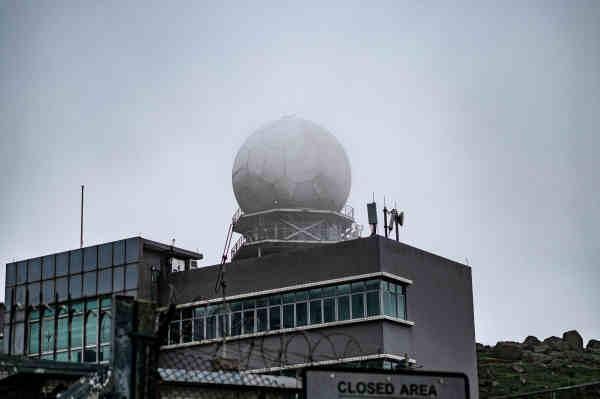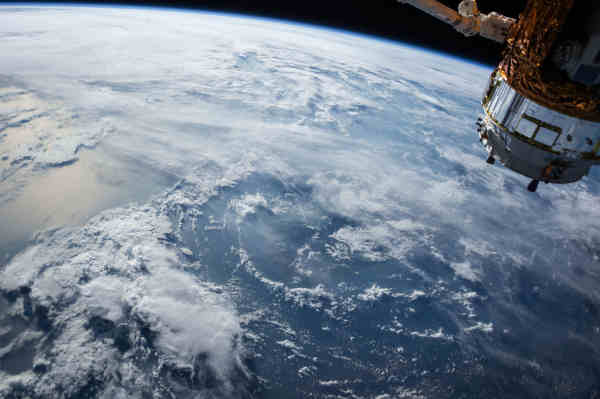At its core weather data comes as the result of observing and recording the physical environment around us and around the world. Weather itself is a natural phenomenon that occurs due to various natural cycles on earth such as solar heating, ocean currents, and the chemical composition of our environment. Weather data, then, is just a record made as those natural occurrences are observed. This record typically includes data such as the temperature, wind speed, whether it was raining or snowing. Throughout most of history, weather data has been recorded by hand in weather diaries. However, in recent times much of the work has been taken over by sophisticated, automated sensor arrays that record their observations to computing servers via the internet.
Weather data in ancient times

The earliest weather data was collected by ancient civilizations thousands of year ago. We know this from preserved writings, and some of the earliest of these have been found in India and Greece. These early scientists manually collected their own weather observations and combined them with observations from others to better understand the seasons and manage crops. It is even believed that some early weather data collectors were able to use their data to predict weather events accurately enough to fool people into thinking that that they could predict other future events. Although the exact data that these earliest meteorologists collected is gone, the writings and historical evidence clearly shows us that weather data has been important since the earliest days of human civilization.
Many of early history’s well-known early and philosophers were weather data collectors. Hippocrates, better known as the father of modern medicine, included weather is his writings and specifically tied weather observations to diseases. Aristotle, the famous Greek philosopher who you probably last encountered in high school, wrote a text entitled Meteorology. In it he draws on various weather and climate observations to make explanations of wind, water, and even the changing landscape of the earth itself.

Weather data in Europe and early America
As time advanced, so did the sophistication of weather data collection and its use for prediction. By the Middle Ages, meteorology was an established science and heavily invested in weather data collection as its basis. It was during this period that more modern weather data recording instruments were invented. The first modern-style anemometer became available to measure wind speed, and the first hygrometer, based on work by Leonardo da Vinci, was made to measure humidity. Measuring temperature proved to be an even more difficult challenge. People had been trying to measure temperature accurately since the ancient Greeks, and even Galileo, the Italian of telescope and astronomy fame, made an attempt. (However, don’t confuse Galileo’s actual work with the decorative Galileo Thermometer where color glass bulbs float in a column of liquid. This was invented a generation later by a team that included one of Galileo’s students and is not very accurate.) It wasn’t until the early 1700s that the accurate, modern-type thermometer was invented.
Some of the earliest systematic weather data in America was collected along the Delaware River in the 1640s. Famous Americans presidents were also extremely interested in weather. Thomas Jefferson, for example, famously recorded hourly weather data during the July summer days of 1776 while the Deceleration of Independence was being signed. What is less well know is that he maintained years of detailed weather observations through 1816. Even George Washington kept a weather data diary with his last data recorded the day before his death in December 1799. He felt so strongly about recording consistent weather data that he even had Martha Washington record readings for him when he was away from Mount Vernon.

Modern Weather Data
Luckily, modern weather data does not rely on the observations of a small number of elites and genius. Starting in the early 1900s, a network of weather stations was built to collect worldwide weather data. In the early days these observations were mostly manual and conducted at military installations and major urban areas. With the advent of airplanes, the importance of weather data for safety and navigation became even more critical. And along with the need came an increasing number of facilities well suited to collect high quality weather data, airports.
By the 1950s early automated weather stations were being deployed to collect hourly observations. This data was being fed into early computers to make make increasingly accurate weather predictions available to the masses. This network of stations continues to grow and today consts thousands of official weather observing stations around the world and many hundreds of thousands of personal stations. The official stations are typically managed by governments and scientific institutions and their data are collected by computer systems to become the backbone of the world’s weather data. In addition, some of the smaller, more localized stations also feed into the global network to add additional data points for analysis.

Visual Crossing Weather Database
The Visual Crossing Weather Database contains weather data back to 1970, but you will find that this early data is limited in its availability. Most basic weather metrics are likely to be available for major populated areas and military and government installations during this period. These metrics include temperature, wind, and precipitation. Modern weather data becomes much more readily available starting in the 1980s, and by the 1990s, good and accurate data is available for the US, Europe, and large parts of the rest of the world.
The weather data collection network continues to grow as more stations come online and older stations are replaced with more capable stations. In addition to land and sea reporting stations, modern weather models ingest data from air observations and earth-orbiting satellites. Indeed, the sky itself is no longer the limit when answering the question, “Where does weather data come from?”
